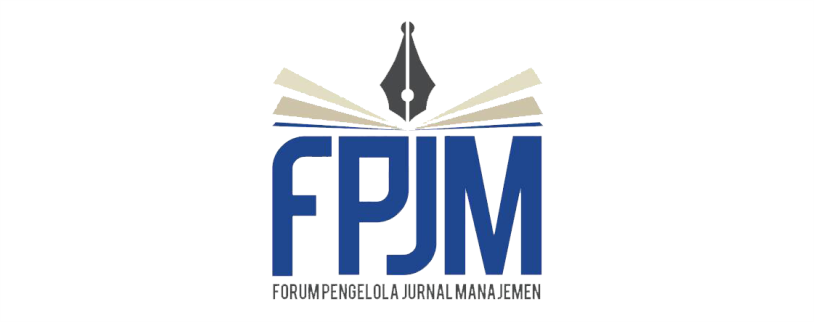Analisa Model Bisnis Radio Suara Surabaya dan Pengembangannya di Era Disruptive Technology
DOI:
https://doi.org/10.26905/jmdk.v6i2.2435Keywords:
Disruptive Technology, Business Model, Radio Suara SurabayaAbstract
The speed of ICT developments, specifically in internet and mobile technologies, have highlighted the rising importance of the Business Model (BM) in the digital economy era. Digital business is very complex, dynamic and  high levels of uncertainty and competition (disruptive). This study analyzes how Radio Suara Surabaya adopts and employs the convergence media in their business activities to anticipate and exploit the opportunity within the disruptive era. The data collection technique uses a mixed methods model Sequential Exploratory Design, where qualitative data includes semi-structured interviews, observations, discusion group focus with stakeholders, while quantitative data includes distributing questionnaires to stakeholders. This study reveal that the adoption of convergence media conducted by Radio Suara Surabaya can maintain their existence within the turbulent business landscape.
https://doi.org/10.26905/jmdk.v6i2.2435
Downloads
References
Amit, R., & Zott, C. (2001). Value creation in E-business. Strategic Management Journal, 22(6-7), 493–520.
Applegate, L. M. (2001). Emerging Networked Business Models : Lessons from the Field. HBS No. 9-801-172, Harvard Business School, Boston, MA.
Baden-Fuller, C., & Mangematin, V. (2013). Business models: A challenging agenda. Strategic Organization, 11(4), 418–427.
Creswell, J. W. (2008). Research design: Qualitative, quantitative, and mixed methods approaches (3rd ed.). Thousand Oaks, CA: Sage Publications.
Dewobroto, W. S. (2013). Penggunaan Business Model Canvas Sebagai Dasar Untuk Menciptakan Alternatif Strategi Bisnis dan Kelayakan Usaha. Jurnal Teknik Industri issn: 1411-6340. Jakarta: Universitas Trisakti.
Gambardella, A., McGahan, A. M. 2010. Business-Model Innovation: General Purpose Technologies and Their Implications for Industry Structure. Long Range Planning, Vol. 43, No. 2-3, p. 262-271
Høgevold, Nils M.. 2011. A Corporate Effort Towards A Sustainable Business Model. European Business Review, Vol. 23 Iss 4 pp. 392 – 400
Jack, S. and Anderson, A. (1999). Entrepreneurship Education Within The Enterprise Culture: Producing Reflective Practitioners. International Journal of Entrepreneurial Behaviour & Research, Vol. 5 No. 3, pp. 110-25
Kähkönen, Anni-Kaisa. 2012. Value Net: A New Business Model for The Food Industry. British Food Journal, Vol. 114 Iss 5 pp. 681 - 701
Kottler, Philip. and Keller, L. Kevin. 2009. Manajemen Pemasaran, Edisi 13.Terjemahan. Jakarta: Penerbit Erlangga.
Liu, Chun Hsien., Chen, Liu Ming-Chao., Tu, Yi-Hsien., Wang, Chu-Ching. 2014. Constructing A sustainable Service Business Model. International Journal of Physical Distribution & Logistics Management, Vol. 44 Iss 1/2 pp. 80 – 97
Nahapiet, J. The Role Of Social Capital In Inter-Organizational Relationships. In: CROPPER, S.; EBERS, M.; HUXHAM, C.; RING, P. S. (Org.). Inter-Organizational Relations. Oxford: Oxford University Press, 2008, P. 580-606.
Nahapiet, J. J.; Ghoshal, S. Social Capital, Intellectual Capital, And The Organizational Advantage. Academy Of Management Review, V. 23, N. 2, P. 242-266, 1998
Peter Drucker, 1985. Innovation and Entrepreneurship: Practice and Principles. New York: William Heinemann Ltd. hlm. 67
Peter Smith Ring and Andrew Van de Ven, Developmental Processes of Cooperative Interorganizational Relationships, Academy of Management Review, Vol. 19, No. 1, 1994.
Puspowarsito. AH, 2006, Hubungan Antara Keusahawanan Serikat dengan Prestasi Serikat : Campuran Pemasaran dan Perserikatan Bisnis Sebagai Moderator, Disertasi, Universitas Sains Malaysia (USM).
Roger, Martin L., [i Sally, Osberg (2007) Social Entrepreneurship: The Case for Definition, Leland Stanford Jr. University: 35
Roger.L . Martin & Sally Osberg. Social Entrepreneurship: The Case For Definition. 2007. Stanford Social Innovation Review. Jr,University.page 3-4
Ronald S. Burt, Structural Holes: The Social Structure of Competition (Cambridge: Harvard University Press, 1992), p. 12.
Shane, S & Venkataraman, S, 2000, The Promise of Entrepreneurship as a Fild of Research, Academic Management Review, Vol.25.
Scott A. Snell and James W. Dean, Jr., Integrated Manufacturing and Human Resource Management: A Human Capital Perspective, Academy of Management Journal, Vol. 35, No. 3 (1992), pp. 467-504.
Stoner, A.F, James, et. Al, 2004, Manajemen, Edisi Bahasa Indonesia, Alih Bahasa: Alexander Sindoro, Jakarta: PT Buana Ilmu Populer.
Vasudha Vasakaria. A Study on Social Entrepreneurship and the Characteristics of Social Entrepreneur, The Icfaian Journal of Management Research, Vol. VII, No. 4, 2008. Hlm. 35
Yang, X., Sun, S. L. and Zhao, X. (2018). Search And Execution: Examining The Entrepreneurial Cognitions Behind The Lean Startup Model. Small Business Economics, 1-13.
Yin, R. (2003). K. (2003). Case Study Research: Design And Methods. Sage Publications, Inc, 5, 11.
Yin, R. (1984). Case Study Research. Beverly Hills Ca: Sage.
Yin, R. K. (2013). Validity And Generalization In Future Case Study Evaluations. Evaluation, 19 (3), 321-332.
Zott, C., Amit, R. and Massa, L. (2011). The Business Model: Recent Developments And Future Research.
Downloads
Published
Issue
Section
License
Authors who publish with this journal agree to the following terms:
(1)Â Copyright of the published articles will be transferred to the journal as the publisher of the manuscripts. Therefore, the author confirms that the copyright has been managed by the journal.
(2) Publisher of Jurnal Penelitian is University of Merdeka Malang.
(3) The copyright follows Creative Commons Attribution–ShareAlike License (CC BY SA): This license allows to Share — copy and redistribute the material in any medium or format, Adapt — remix, transform, and build upon the material, for any purpose, even commercially.












